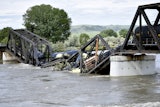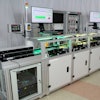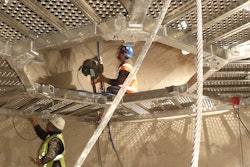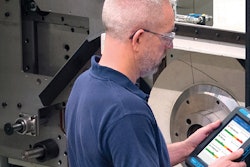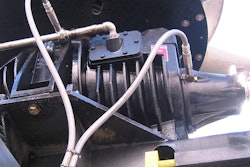One of the most commonly used calibration instruments in the process industry are pressure gauges. Regular calibration of pressure gauges is important because these being mechanical instruments, they are prone to drifting off due to mechanical stress. Calibration of pressure gauges is a crucial process and should be done with utmost care preferably by calibration experts. Listed below are 10 most important factors to keep in mind for pressure gauge calibration:
- Classes of Accuracy—It is vital to determine the specified accuracy class of your gauge while calibrating it. In most of the cases, the accuracy class specification is the ‘% of range’, which means that if the class of accuracy is 1 percent and the scale range is most probably zero to 100 psi, the accuracy is +-1 psi. It is extremely important to know the accuracy class of the gauge which you are calibrating, because it will help determine the acceptable accuracy level and effect of other calibration procedures.
- Pressure Medium Used—A gas or a liquid is one of the most commonly used pressure media for calibrating a pressure gauge. Gas is regular air and preferred liquid is either oil or water. The choice of pressure media depends on the media that is being used during the process and is connected to the gauge being calibrated. The selection also relies heavily on the pressure range.
- Contamination—Pressure media used for calibration should not be prone to contamination. Dirt is a common contaminant in such cases and it could be present inside the gauge which could disrupt the process and harm the calibration equipment.
- Height Difference—The height of gauge that is being calibrated and the height of the calibration equipment should be considered before beginning the calibration process. This is important because the height difference can cause error due to the hydrostatic pressure of the pressure media. In case it’s impossible to set the equipment and the gauge at the same height, than the effect of height difference should be calculated and noted during calibration.
- Leak Testing—Before initiating the calibration, it is extremely crucial to perform leak test of the piping. If any leaks are present, they may give way to errors. A simple leak test is to pressurize the system and then let the pressure stabilize. The pressure should be monitored during this test to ensure that it doesn’t drop too much.
- Adiabatic Effect—You should be conscious of the adiabatic effect while calibrating your pressure gauge. For instance, in a closed system which comprises a gas pressure media, the adiabatic effect can be present. The temperature of the gas will affect the volume of the gas, which in turn affects the pressure. In such situations, the pressure can rise quickly which causes the temperature to rise as well. As the temperature of the gas starts to fall, its volume reduces which causes the pressure to drop. This drop in pressure may seem like a leak, but is actually the result of the adiabatic effect.
- Torque Force—This factor is crucial especially in case of torque sensitive gauges. Excessive force should not be used when connecting the pressure connectors to the gauge. If more than necessary force is used, the gauge can get damaged. It is best to use appropriate tools, adapters/seals.
- Mounting Position – Since pressure gauges are mechanical instruments, their position during calibration affects the reading. Hence, it is strongly recommended to calibrate a gauge in the same position which it is used in actual process of measuring. Also follow the manufacturer’s instructions strictly related to mounting and operating positions.
- Pressure Generation – For accurate calibration of a pressure gauge, pressure generation is must so that necessary pressure is applied to the gauge. This can be done by:
- Pressure hand pump
- Pressure regulator with a bottle
- Dead weight tester
- Exercising – Pressure gauges are known to have some amount of friction in their movement which can cause changes in their performance. Hence, if the gauge has not been applied with pressure in some time, it should be "exercised" before calibrating it. To do so, a nominal max pressure should be applied to the gauge and allowed to sit for a minute before venting it out. This ‘exercise’ should be repeated up to 3 times before carrying out the calibration process.
Calibration tells you exactly how erroneous your pressure ensure gauge is. Hence, to that your pressure gauge consistently delivers accurate results, it should be calibrated frequently by calibration experts.
Edward Simpson works for RS Calibration Services and has a knack for finding faults in machines and does not rest until they are rectified to perfection. He lives in Pleasanton, CA and loves to write about how machines work and about the importance of proper care and calibration of equipment. When he's not working or writing, he loves to run to stay fit.
